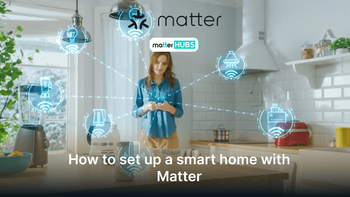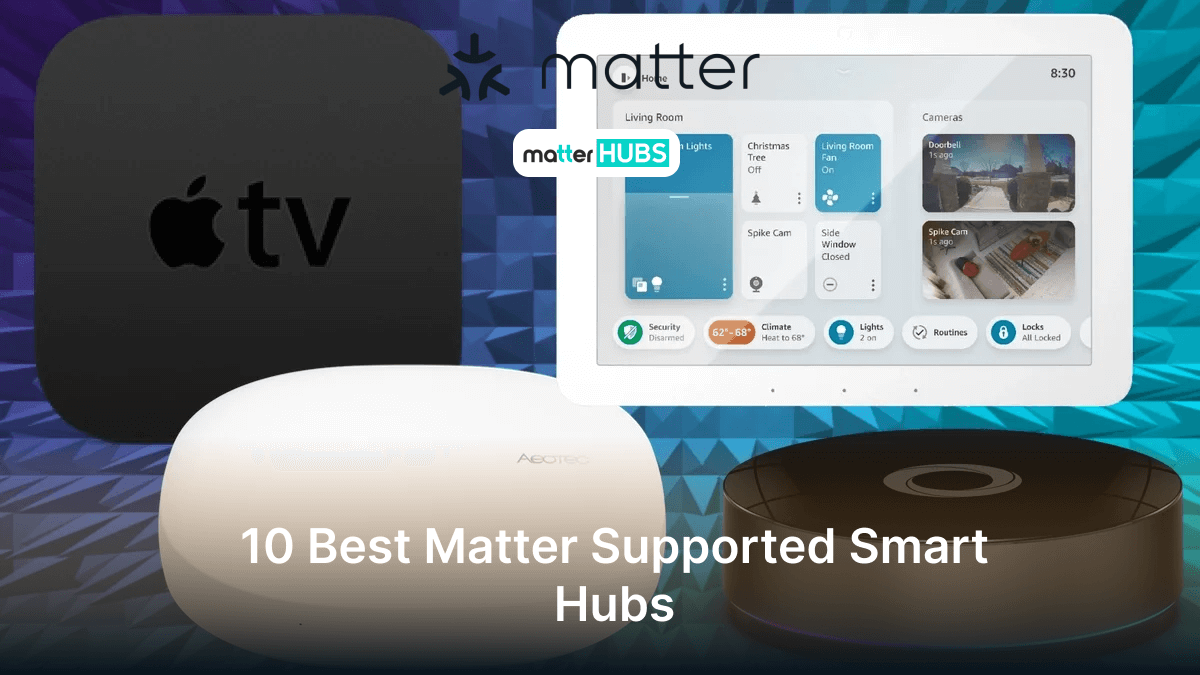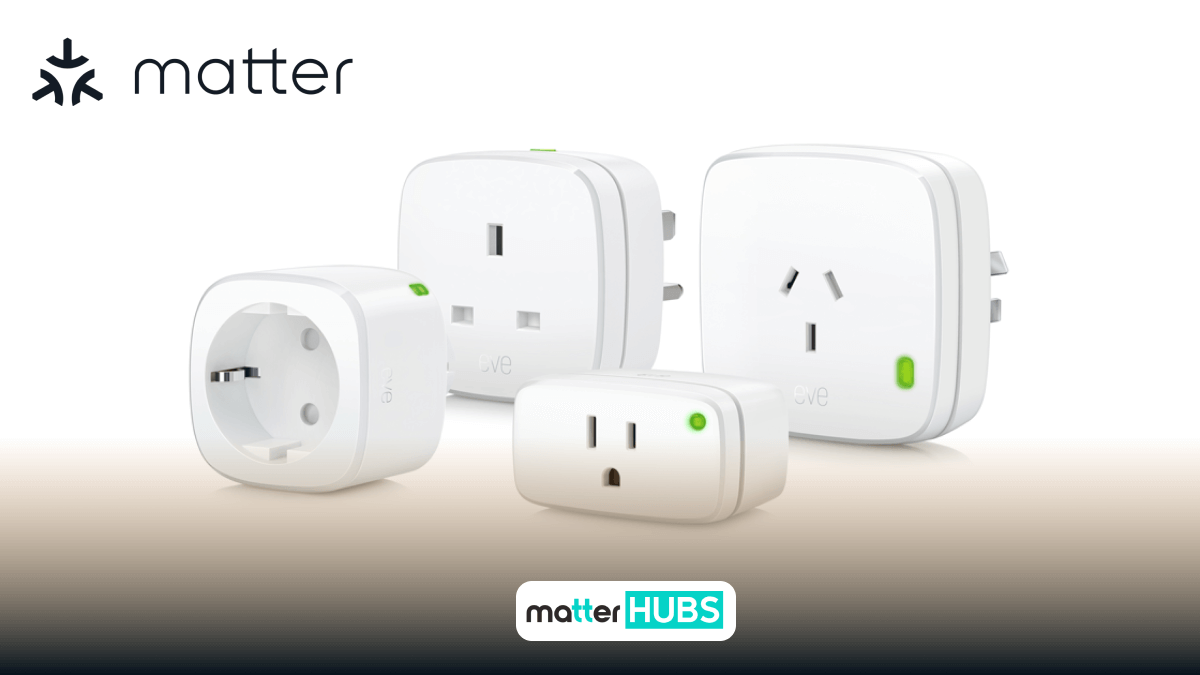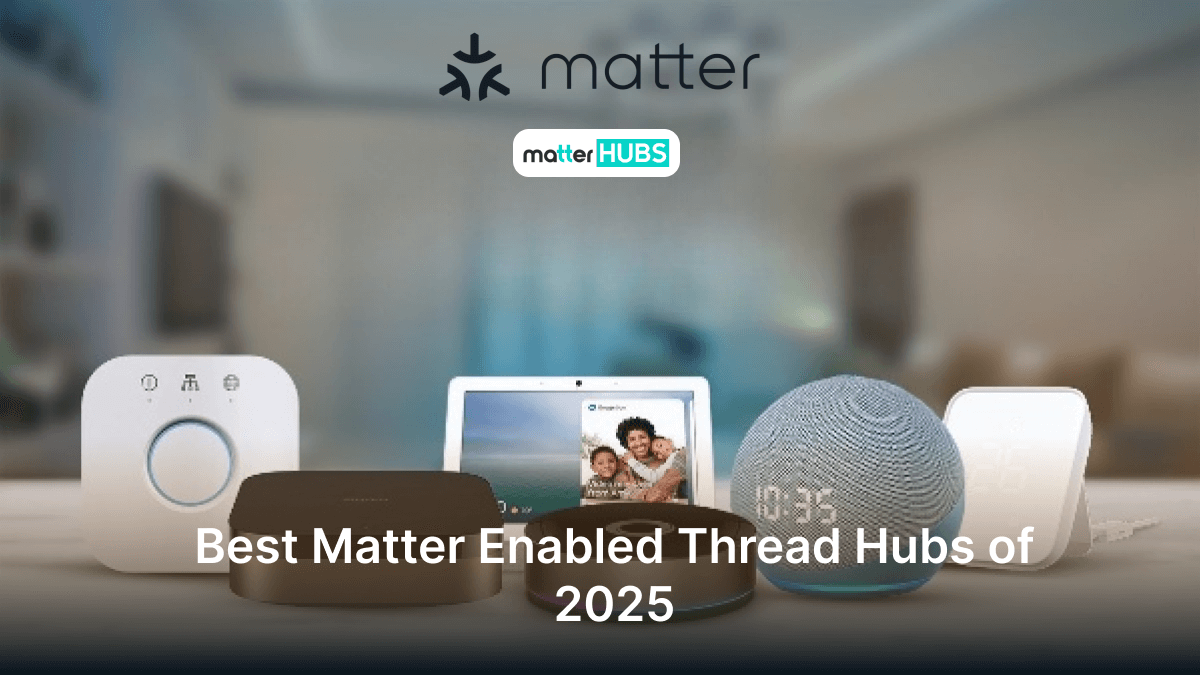
Best Matter Enabled Thread Hubs of 2025
a year ago • 6 min read

What are the best Matter Enabled Thread Hubs in 2024? Here I have given you a list of the best Matter Thread Hubs! In this blog, I explore the best matter thread hubs of 2024, highlighting their features, benefits and what makes them stand out. So, without further ado, let’s get right into it!
Why matter and thread for your smart home?
Before focusing on the best thread hubs, let's briefly discuss why matter and thread are critical to modern smart homes.
Matter is a universal standard created by the Connectivity Standards Alliance (CSA), previously known as the Zigbee Alliance. Its primary goal is to ensure that smart home devices work seamlessly together. This means you can easily connect and control products from different brands without any compatibility issues.
Thread is a wireless mesh networking protocol designed specifically for IoT devices. It operates on low power, offering a reliable, secure, and energy-efficient way to connect devices. This enhances the stability and range of smart home networks, ensuring consistent and dependable communication throughout your home.
Together, Matter and Thread create a seamless, reliable smart home experience, allowing devices from various brands to work together effortlessly.
Top Matter Thread Hubs
- Apple HomePod (2nd Generation)
- Amazon Echo Plus (4th Gen)
- Google Nest Hub (2nd Gen)
- Zemismart M1 hub
- Moes Smart Home Hub
Apple HomePod (2nd Generation)
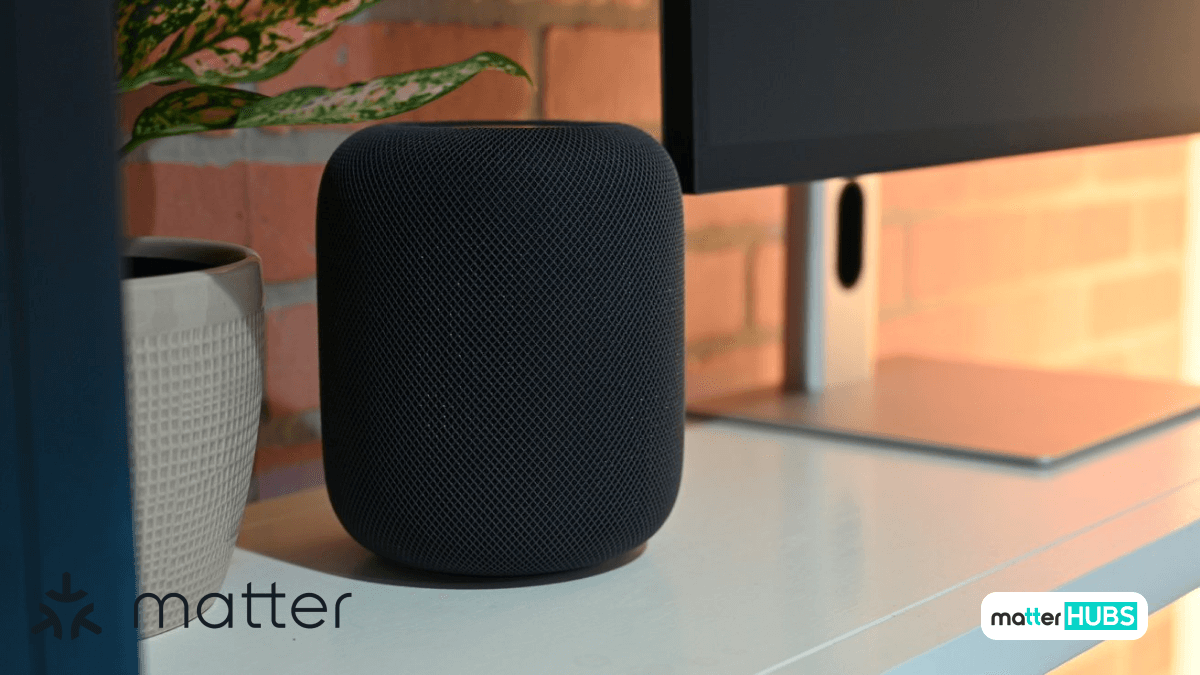
Apple HomePod (2nd Generation) continues to be a leading choice for smart home enthusiasts. It works together with Matter and Thread support. It acts as a powerful hub supporting Apple's ecosystem and works seamlessly with other Matter-compatible devices.
Key Features
- High-fidelity audio performance
- Advanced spatial awareness and voice recognition
- Seamless integration with Apple HomeKit and Matter devices
Pros and Cons
Pros
- A promising smart home hub via HomeKit and Matter
- Two can form a stereo pair
- Supports Airplay 2 for multi-room audio
- Supports Dolby Atmos
Cons
- Lots of other speakers sound better and cost less
- Limited support for high-res music-streaming services beyond Apple Music
- You need two for the best audio performance
- You can’t add a subwoofer or rear surround channels
The HomePod's impressive sound quality and deep integration with Apple's ecosystem make it a top choice for users invested in Apple home kit. Its Matter support ensures compatibility with a wide range of devices.
Amazon Echo Plus (4th Gen)
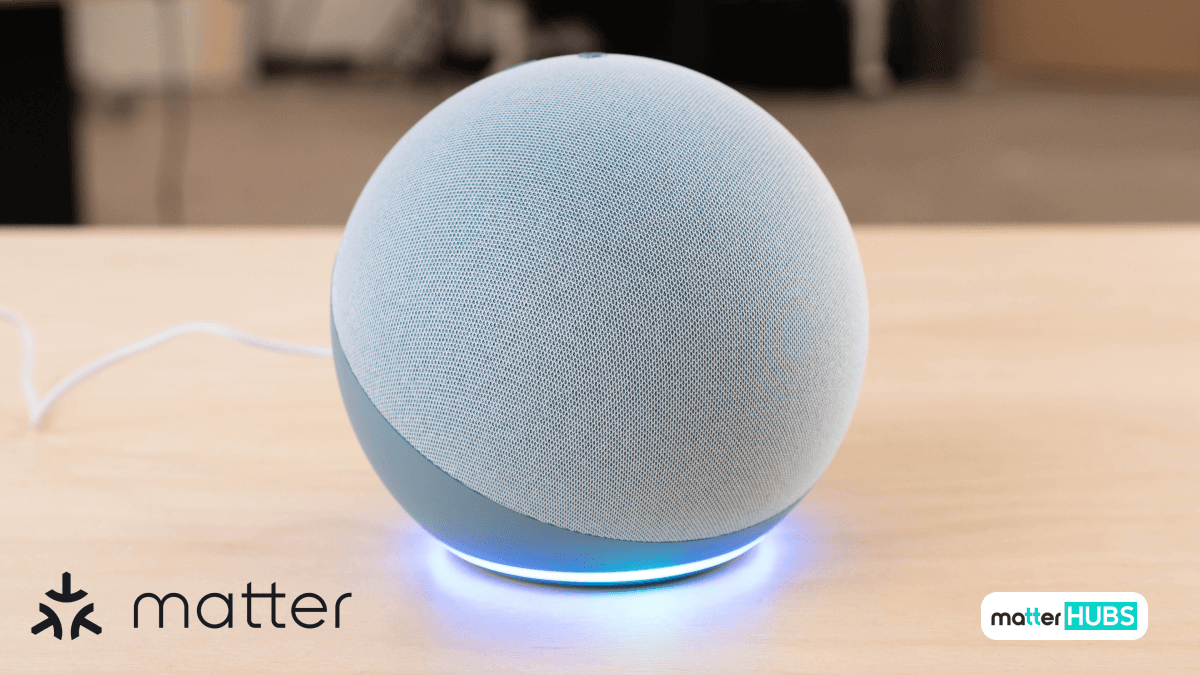
The Amazon Echo Plus (4th Gen) remains a favorite among Alexa users and its support for Matter and Thread further enhances its functionality. As an advanced smart speaker, it offers excellent voice control capabilities and a built-in Zigbee hub which complements its Matter support.
Key Features
- High-quality sound and Alexa voice control
- Built-in Zigbee hub for additional device compatibility
- Thread and Matter support for extended interoperability
Pros and Cons
Pros
- Loud, room filling sound
- Integrated smart home hub
- Good voice response
Cons
- Music can sound overly “processed” at times
- Lacks warmth in the midtones
Amazon Echo Plus (4th Gen) is a dual functionality as a speaker and hub combined with Matter and Thread support. It makes a versatile choice for users looking to integrate various smart devices into their Alexa-powered setup.
Google Nest Hub (2nd Gen)
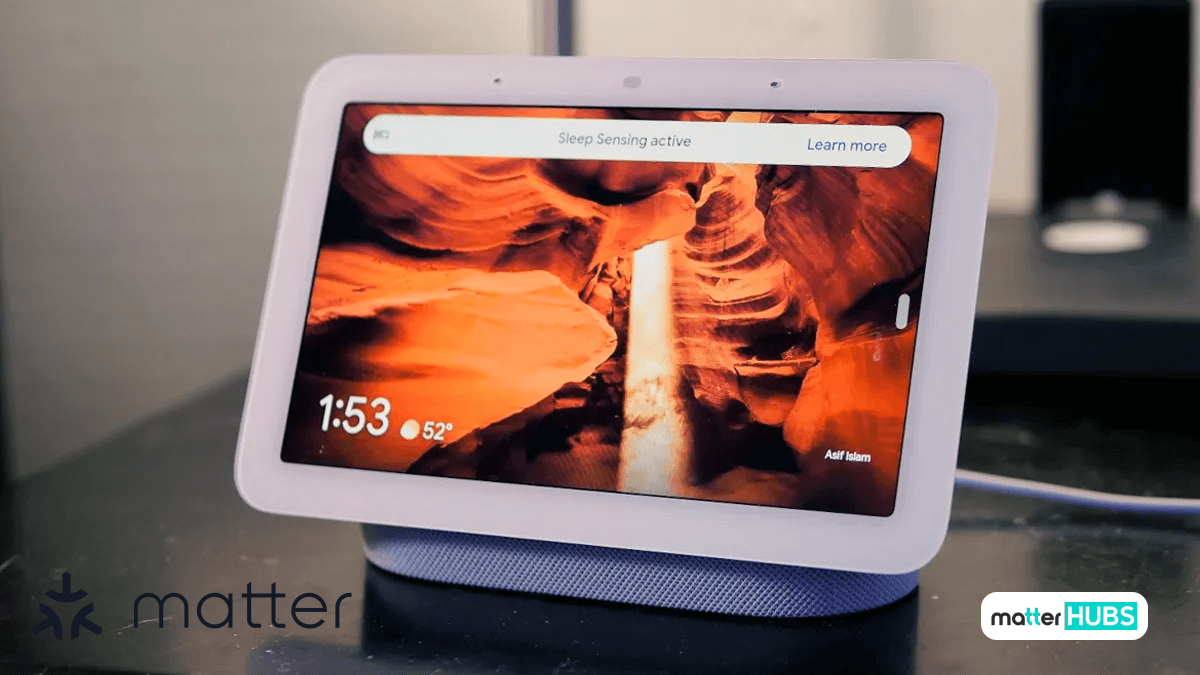
The Google Nest Hub (2nd Gen) is another top contender, known for its excellent Google Assistant integration and support for Matter and Thread. This smart display not only controls your smart home devices but also provides a visual interface for managing and monitoring them.
Key Features
- 7-inch touchscreen display
- Google Assistant voice control
- Matter and Thread compatibility for enhanced connectivity
Pros and Cons
Pros
- Affordable
- 50% more bass than 1st-gen model
- Tracks sleep without wearable devices
- Sleeker look with a cleaner bezel
- Lack of camera for bedroom privacy
Cons
- Sleep Sensing will require a FitBit Premium subscription in 2024
- Voice and touch controls have not noticeably improved over the first Nest Hub.
The Nest Hub's combination of a display with smart home controls and its Matter and Thread support makes it an excellent choice for users who want both visual and voice-based interactions with their smart home.
Zemismart M1 hub
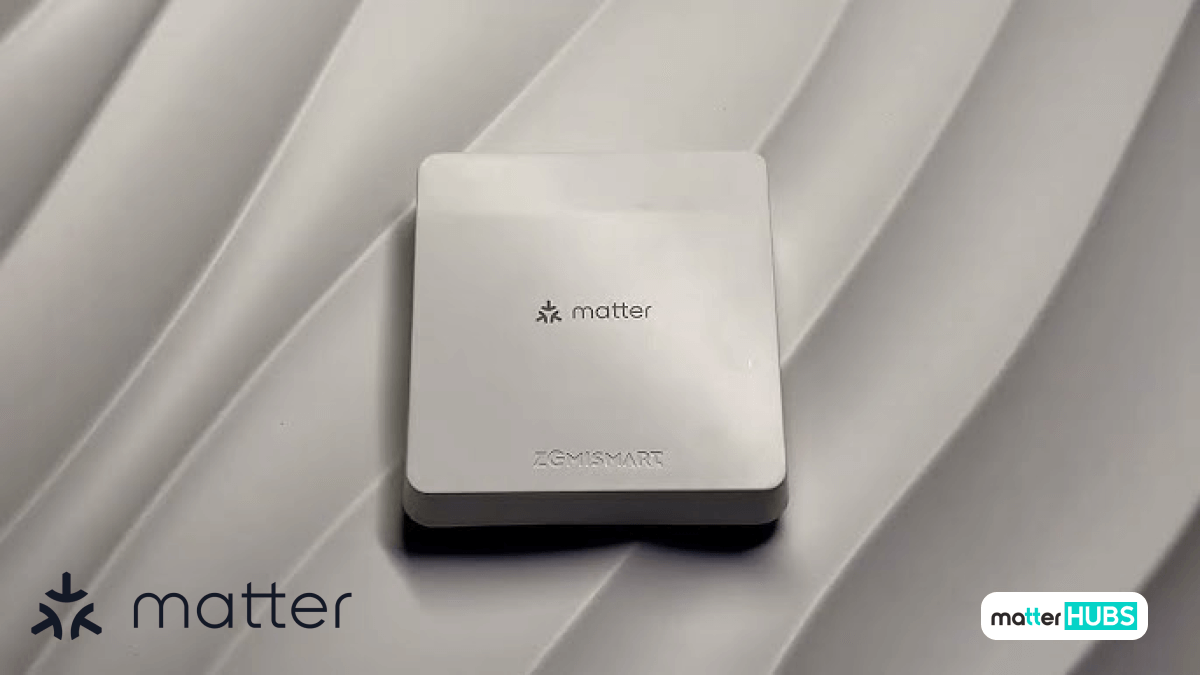
The Zemismart M1 Hub is a versatile smart home hub designed to centralize control of various smart devices. It supports multiple communication protocols, including Zigbee, Thread and Wi-Fi, enabling seamless integration with a wide range of smart home products.
Key Features
- Multi-Protocol Support
- User-Friendly App
- Voice Assistant Integration
- Secure Local Control
- Compact Design
Pros and Cons
Pros
- Wide Compatibility
- User-Friendly App
- Flexible Automation
- Reliable Connectivity
- Affordable Price
Cons
- Support Limited Ecosystem
- Occasional Connectivity Issues
- Limited Advanced Features
The M1 Hub features an intuitive app for easy setup and management, offers robust automation options, and enhances your smart home experience by ensuring reliable connectivity and interoperability between different devices.
Moes Smart Home Hub
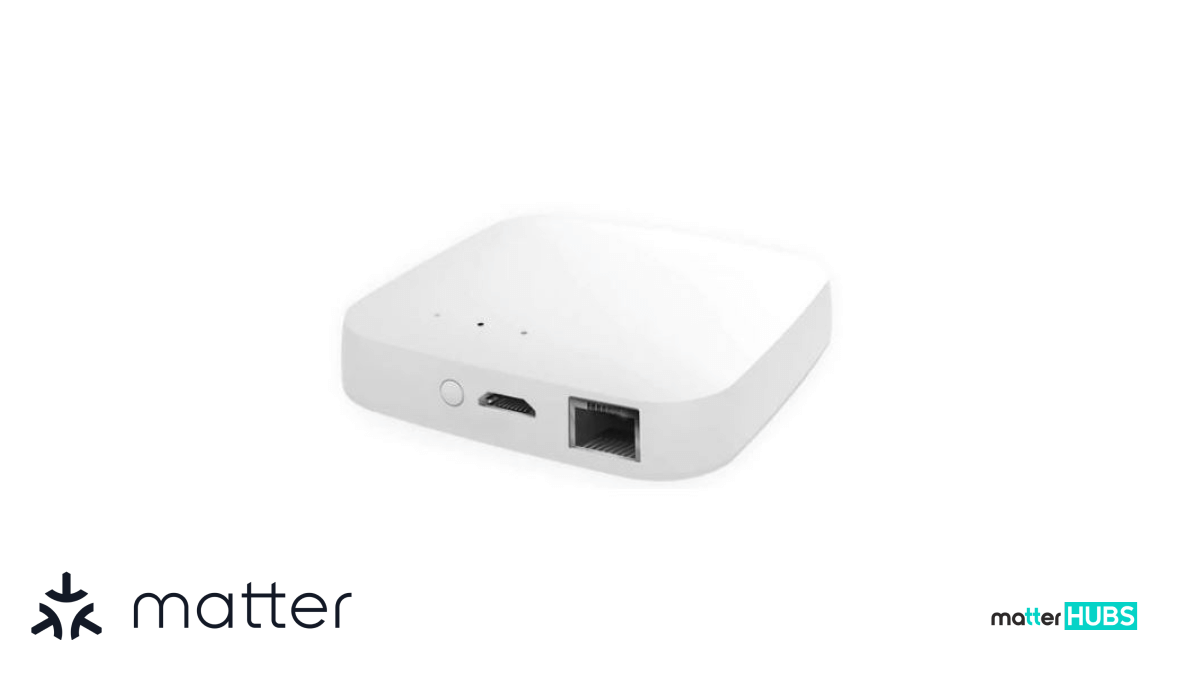
The Moes Smart Home Hub is a versatile device designed to centralize and streamline the control of various smart home devices. It supports multiple communication protocols, including Zigbee, Thread, Wi-Fi, and sometimes Z-Wave, making it compatible with a wide array of smart products.
Key Features
- Matter Support
- Tuya Integration
- Centralized Control
- Automation Capabilities
- User-Friendly Interface
- Remote Access
- Security Features
Pros and Cons
Pros
- Multi-Protocol Support
- User-Friendly Interface
- Automation Capabilities
Cons
- Potential Connectivity Issues
- App Performance Variability
Moes Smart Home Hub offers a seamless and user-friendly way to manage your smart home setup. Its integration with the Tuya ecosystem makes it an excellent choice if you use Tuya products. So, you can easily customize your home’s functionality and keep things running smoothly from anywhere.
| Device | Connectivity Protocol | Voice Control |
|---|---|---|
| Apple HomePod | Thread & Matter | Yes |
| Amazon Echo Plus | Thread, Matter & ZigBee | Yes |
| Google Nest Hub | Thread & Matter | Yes |
| Zemismart M1 hub | Thread, Wi-Fi, Matter & ZigBee | Yes |
| Moes Smart Home Hub | Zigbee, Thread, Wi-Fi, Z-Wave & Matter | Yes |
Drive into How to set up a smart home with Matter to get information on how to connect Matter Smart Home correctly! Also, if you like to integrate your home with ZigBee hubs check out The Best Matter Zigbee Hubs 2024.
Conclusion
As smart home technology continues to advance, Matter-enabled Thread hubs are becoming increasingly important for ensuring seamless device integration and reliable communication. Whether you're a fan of Apple, Amazon, Google, or prefer a more specialized hub, the options listed above offer a variety of features and benefits to suit your needs.
Investing in one of these top Matter-enabled Thread hubs of 2024 will help you create a more connected, efficient, and enjoyable smart home experience.
FAQs
Thread Ideal for battery-powered devices, expansive homes with coverage concerns, and security-conscious users. Wi-Fi Perfect for high-bandwidth devices like entertainment systems and voice assistants. Also, a good choice if you already have a strong Wi-Fi network set up.
- Apple TV 4K (2nd Gen or later)
- Apple HomePod mini
- Nanoleaf Lines
- Nanoleaf Shapes
- Nanoleaf Elements
- eero 6
First, threads enable parallelism and can significantly improve the overall performance and efficiency of your application. They allow you to take full advantage of multi-core processors and distribute tasks across available resources.
Another key difference between the two standards is that Thread does not define specific application layers, while Zigbee defines all layers in the OSI model. This makes Thread a more flexible choice in terms of application layer selection.

